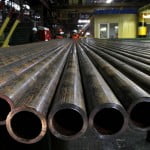
he Wall Street Journal recently carried a story highlighting a case of Chinese investment in the US cotton processing industry in South Carolina. While it is clearly welcome news for the economy of South Carolina, unwrapping the detail reveals that the key drivers for this investment are to be found in China, rather than the United States.
On the one hand, the input costs of cotton production derive mainly from raw materials and energy, both of which are cheaper in the US than in China. But on the other hand, Chinese intervention in the domestic cotton market combined with quotas restricting imports of raw cotton, give Chinese textiles companies an invidious choice. Government stockpiling of domestically produced cotton drives up the price, and import quotas keep it expensive, protecting farmers’ incomes. Add to this the recent export from China of cotton and textiles manufacturing to lower cost destinations in South East Asia and it becomes apparent that this is not simply a case of ‘on-shoring’ but something more complex.
Since the year 2000, China’s agricultural production – despite solid productivity gains – has not kept pace with domestic demand, meaning that China has gone from a position of approximate net food security, to being the largest food importer in the world (I wrote about this here), with the US becoming the largest single agricultural exporter to China. At the same time, China has actively encouraged vertical integration in the food sector as part of its ‘Go Out’ strategy of overseas capital investment.
[“Source-forbes”]




